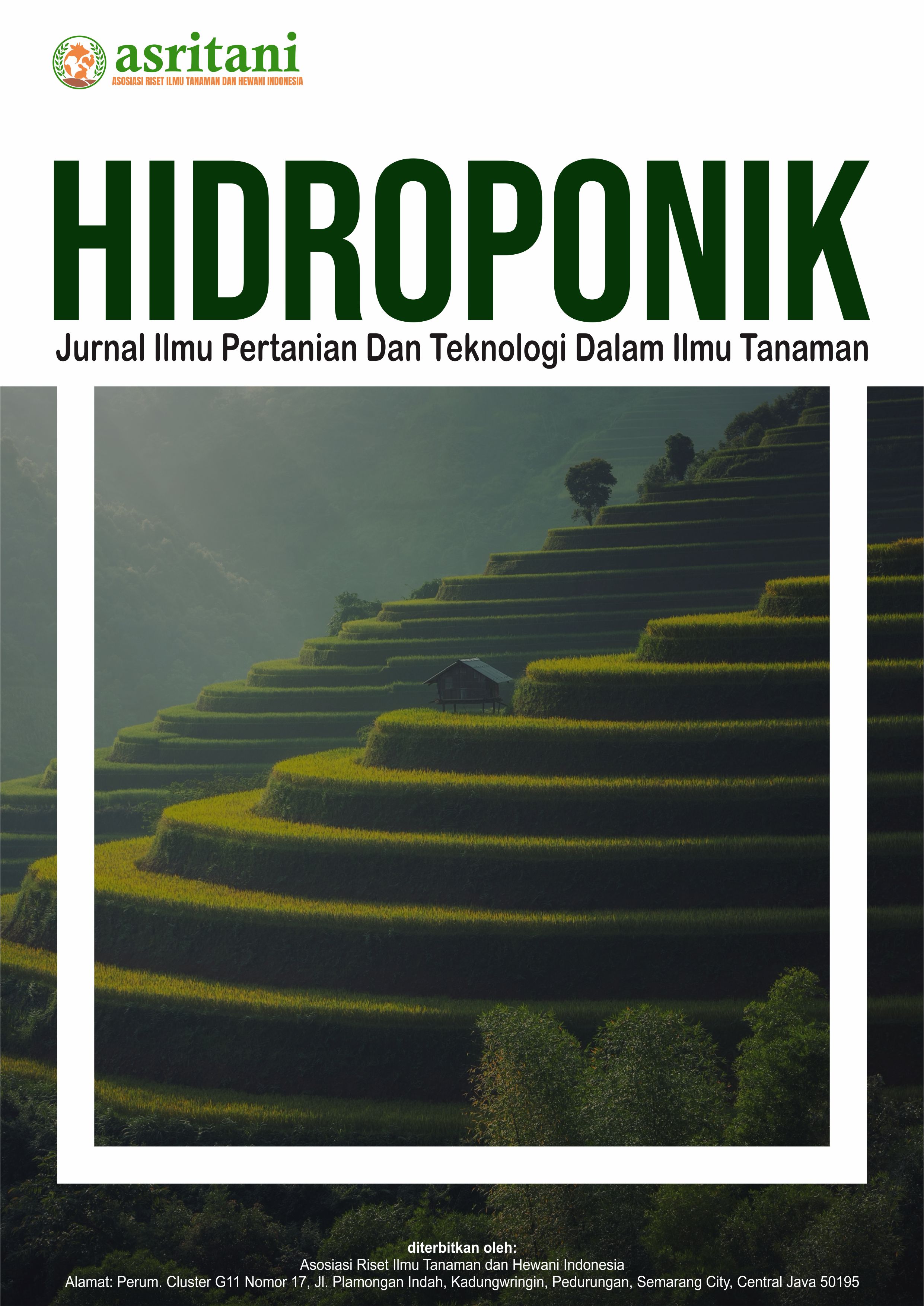Analisis Hubungan Kekerabatan dan Identifikasi Tumbuhan Paku di UIN Sunan Gunung Djati Bandung
DOI:
https://doi.org/10.62951/hidroponik.v1i2.58Keywords:
Ferns, identification, similarity indexAbstract
Ferns are low-level plants whose distribution is quite wide and are often found on the campus of UIN Sunan Gunung Djati Bandung. The aim of this research is to determine the calcification and relationships of ferns that live in the campus area using direct exploration methods by observing their morphological characteristics. The data from morphological observations is then processed into a dendogrm so that relationships can be identified and read using the similarity index formula. The results of this research show that 2 divisions of ferns were found, namely pteridophyta and traceophyta. In the pteridophyta division, 1 class, 2 orders, 6 families and 9 species were found. Meanwhile, in the traceophyta division, 1 class, 1 order, 1 family and 1 species were found. The results of the kinship analysis show that the 10 species of ferns can be divided into 2 large groups based on 16 morphological traits. The relationship between species is measured using the Sorensen similarity index, which shows that several species have a relationship that is very close (≥ 75%), close (51-74%), not close (26-50%), and very not close (≤ 25%). For example, Pityrogramma calomelanos and Adiantum capillus are very closely related with a similarity index of 87.5%, while Pyrrosia piloselloides and Phymatosorus scolopendria are not closely related with a similarity index of 43%.
References
Abadiyah, A. S., Wahidah, B. F., & Hariz, A. R. (2019). Identifikasi Tumbuhan Paku di Hutan Penggaron Kecamatan Ungaran Kabupaten Semarang. Al-Hayat: Journal of Biology and Applied Biology, 2(2), 80. https://doi.org/10.21580/ah.v2i2.4668
Adlini, M. N., Hartono, A., Khairani, M., Tanjung, I. F., & Khairuna. (2021). Identifikasi Tumbuhan Paku (Pteridophyta) di Universitas Islam Negeri (UIN) Sumatera Utara. Biota : Jurnal Ilmiah Ilmu-Ilmu Hayati, 6(2), 87–94. https://doi.org/10.24002/biota.v6i1.3023
Amin, N., & Jumisah, J. (2019). Jenis Tumbuhan Paku di Kawasan Terutung Kute Kecamatan Darul Hasanah Kabupaten Aceh Tenggara. BIOTIK: Jurnal Ilmiah Biologi Teknologi dan Kependidikan, 7(1), 18-27
Majid, A., Ajizah, A., & Amintarti, S. (2022). Keragaman Tumbuhan Paku (Pteridophyta) di Taman Biodiversitas Hutan Hujan Tropis Mandiangin. JURNAL Al-AZHAR INDONESIA SERI SAINS DAN TEKNOLOGI, 7(2), 102. https://doi.org/10.36722/sst.v7i2.1117
Sianturi, A. S. R., Retnoningsih, A., & Ridlo, S. (2020). Eksplorasi Tumbuhan Paku Pteridophyta. LPPM Universitas Negeri Semarang.
Yunita, I., Andalia, N., Mahasiswa Biologi Serambi Mekkah, A., MAN Indrapuri Aceh Besar, G., & Biologi FKIP Serambi Mekkah Aceh, D. (2021). IDENTIFIKASI JENIS-JENIS TUMBUHAN PAKU (Pteridophyta) YANG TUMBUH DI DESA UNING PUNE KECAMATAN PUTRI BETUNG KABUPATEN GAYO LUES. Jurnal Biology Education, 9.
Downloads
Published
How to Cite
Issue
Section
License
Copyright (c) 2024 Hidroponik : Jurnal Ilmu Pertanian Dan Teknologi Dalam Ilmu Tanaman

This work is licensed under a Creative Commons Attribution-ShareAlike 4.0 International License.





